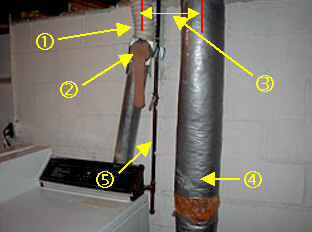|

|
This
site runs best using Microsoft
Internet Explorer |
|

|
|
|
|
Download
The Newest Version of Adobe Acrobat
Reader |
|

|
|
|
|
| |
| Test Your Knowledge |
| Every so often we will publish a "Test
Your Knowledge" question, about issues relating to home ownership and the
construction-related fields. The first person to e-mail us with the correct answer
will receive a gift certificate, good towards the purchase of a Home Inspection through
DSP. |
 |
The
first person to e-mail us with the correct answer(s) will receive a $20.00 gift
certificate good towards the purchase of a Home Inspection, through DSP Structural
Consultants. |
|
|
| Current "Test Your Knowledge" Question |
|
"Which
Federal Governmental Agency Regulates
|
| Indoor Air
Quality In U.S. Homes?" |
|
|
- EPA - Environmental Protection Agency
- OSHA - Occupational Safety and Health
Administration
- CPSC - Consumer Product Safety Commision
- USEHB - United States Environmental Health
Board
|
|
|
|
|
|
|
| Answers To Last "Test Your Knowledge" Question |
"What
Potential Safety Problems Are Present |
In The
Photograph Below?" |

Answers Below: |
Dryer vent pipe is "flex-style"
plastic. This type of vent pipe is not recommended for use due to: a). its
ability to hold lint, and b). it is made out of plastic & can burn.
Recommend using continuous smooth metal piping, as per the lower portion of the
dryer vent.
Dryer vent pipe is using a "lint
sock" in an effort to re-capture warm, moist air from the dryer and return it back
into the house. Note that the clothes dryer's fuel source is natural gas (see item
marked #5). During operation, the gas dryer will emit carbon monoxide as a
by-product of combustion, which can be blown out the lint sock, throughout the house.
For safety, this type of fuel burning appliance must be direct-vented to the
outside.
Note the separation between the clothes
dryer vent pipe (item marked #1), and the fresh-air, or make-up air vent (item marked #4).
In this case the separation is only 16-20 inches. Minnesota requires at least
a 3'-0" separation between these two types of vents, and the Uniform Mechanical Code
goes even farther and specifies a 10'-0" separation. The reason is simply this:
If the fresh-air vent is placed in too close a proximity to a vent that is
exhausting carbon monoxide (a fossil-fuel burning appliance), the carbon monoxide can be
drawn back into the house through the fresh-air vent, creating an obvious safety hazard.
|
|
|
|
Respondent
Results: |
|
Out of over 75 responses, six
individuals answered the above question more or less correctly, and received a
$20 gift certificate from DSP. |
|
|
|
|
|
|
